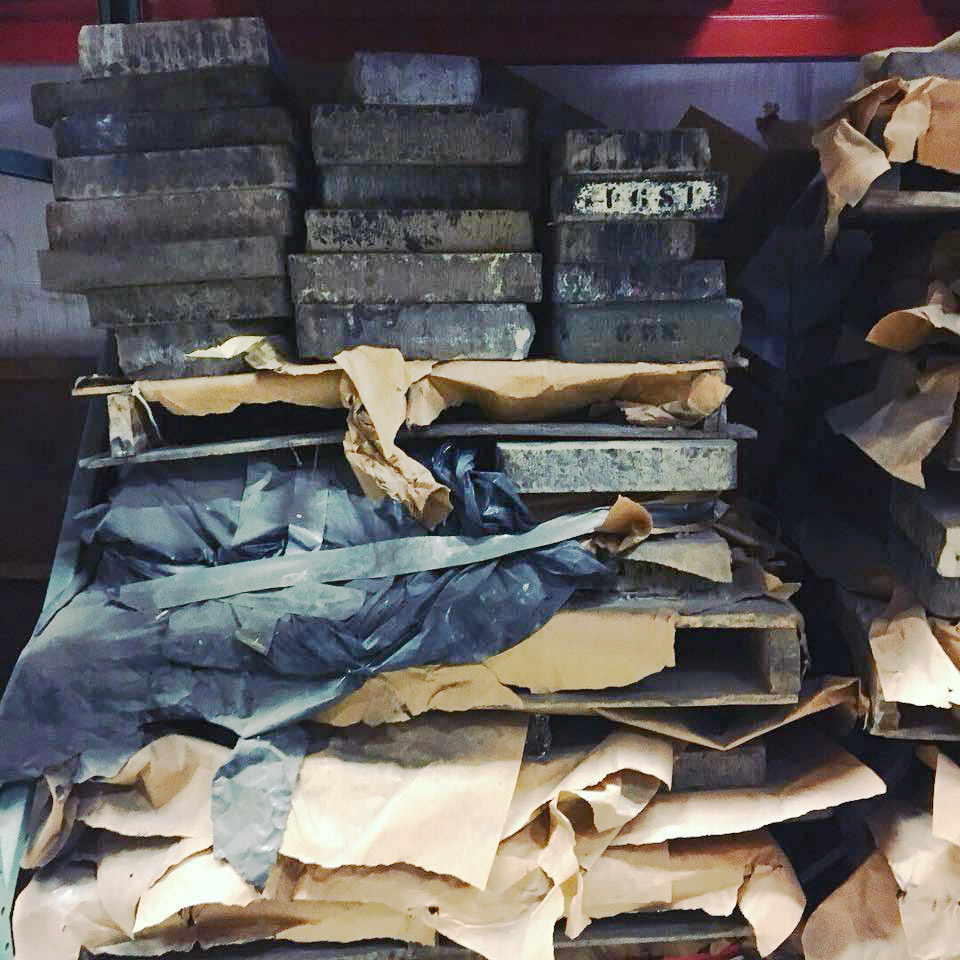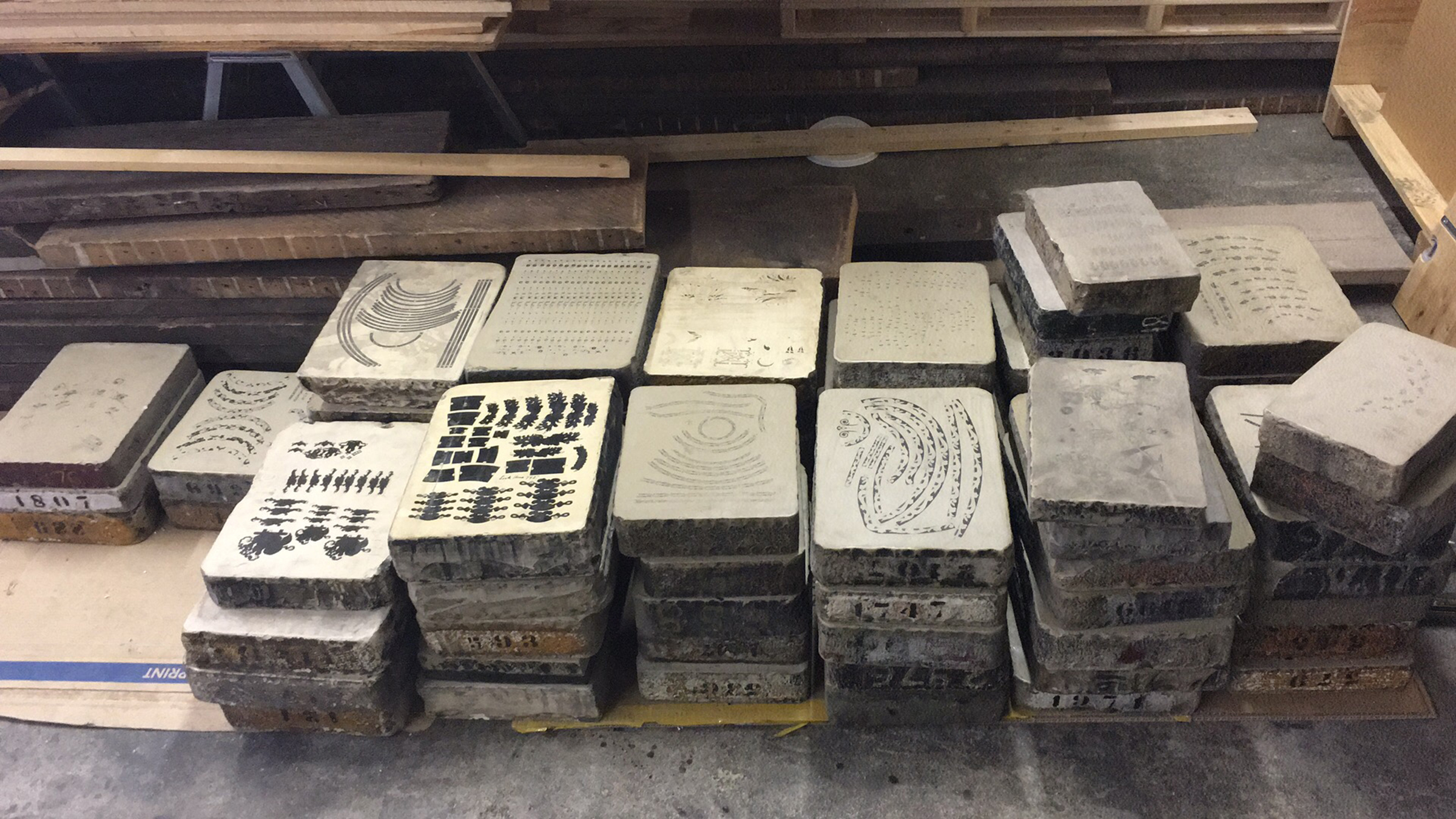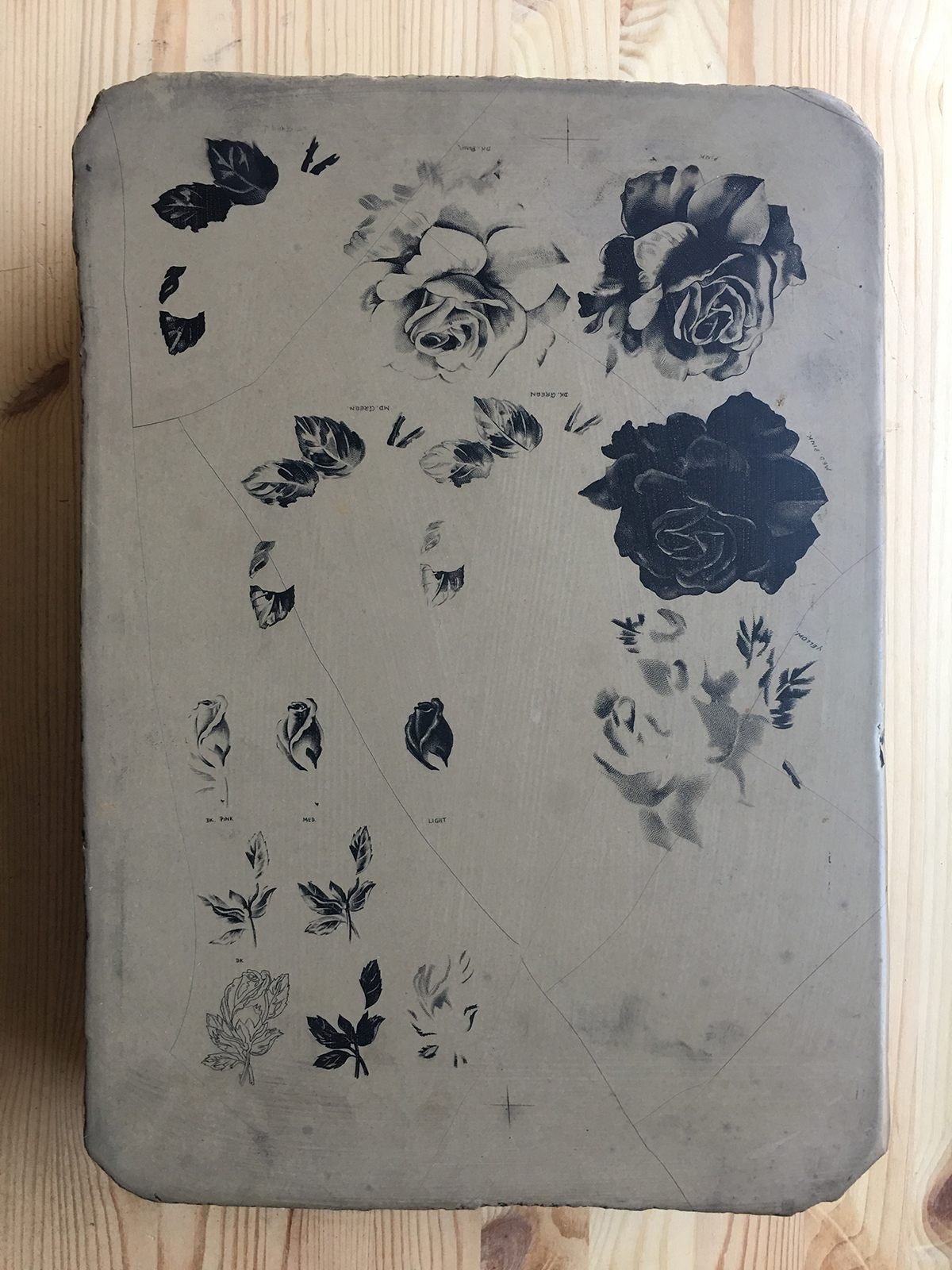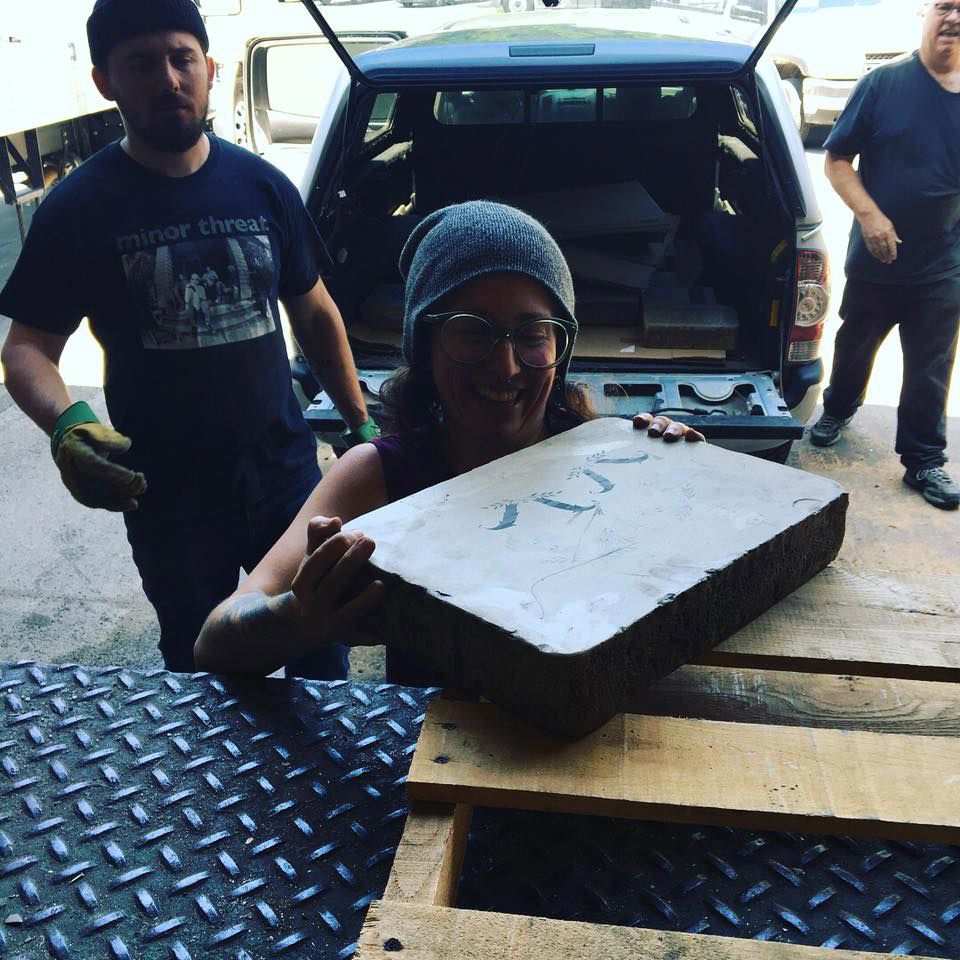Lake Editions Litho Stones
The IEA recently acquired over 160 lithographic stones from Lake Editions of Syracuse University. The majority of the stones are of the highest quality with approximately 75% ranging from “light grey” to the most desired “blue grey” grade densities. The Stones are part of an enormous collection of approximately 2000 that were being stored at a warehouse for many decades. The stones were originally part of the lithographic stones used by Syracuse China to produce decals for their fine porcelain dinnerware. Most of the stones still have images on both sides that still can be printed.
Print Media Faculty Myles Calvert, Print Media Technician Sam Sloan-Wiechert and summer Expanded Media helper Andrew Wiechert along with Co-Director Joseph Scheer, retrieved the stones on May 23rd. Syracuse China has a long History with the New York State College of Ceramics at Alfred University starting in 1928 with its financial support of presenting a new kiln to the college. [3]
Special thanks to Associate Professor of Print Media Dusty Herbig at Syracuse University for help making this happen.
The addition of this many stones will allow for Alfred students and IEA artists to extensively explore color-printing techniques. Professors Myles Calvert and Kathryn Vajda are already planning to introduce this into this falls Sophomore Intro to Print Media courses.
From Wikapedia:
“Later in 1896, the company installed the industry’s first in-house lithographic shop for the “printing of decals.”[2] This made it easy for the decorating department to make inexpensive lithography of hotel and restaurant labels feasible which helped “further the company’s market penetration of the institutional markets.”[1]
- “Syracuse and Onondaga China Information and History”. Collectives, 2010. Retrieved 2010-08-20.
- “The History of Syracuse China”. Syracuse Then and Now, 2010. Retrieved 2010-08-15.
- “Report on the New York State School of Clayworking and Ceramics” (PDF). Alfred University Yearbook 1927- 28: 155–56. 1928. Retrieved 23 November 2014.
More research will need to be done on what technique was used to create the decals. As can be seen in the images, color separations of up to 10 colors can be seen on single stones and quite close to each other. This means they must have been printed with a vehicle that the color pigments would have been applied to after printing and then assembled before applying to the dinnerware??? Aodi Liang, IEA’s archive and research support staff will record each stones images before they are ground and used. Some of the stones with special images we will preserve and not use.






